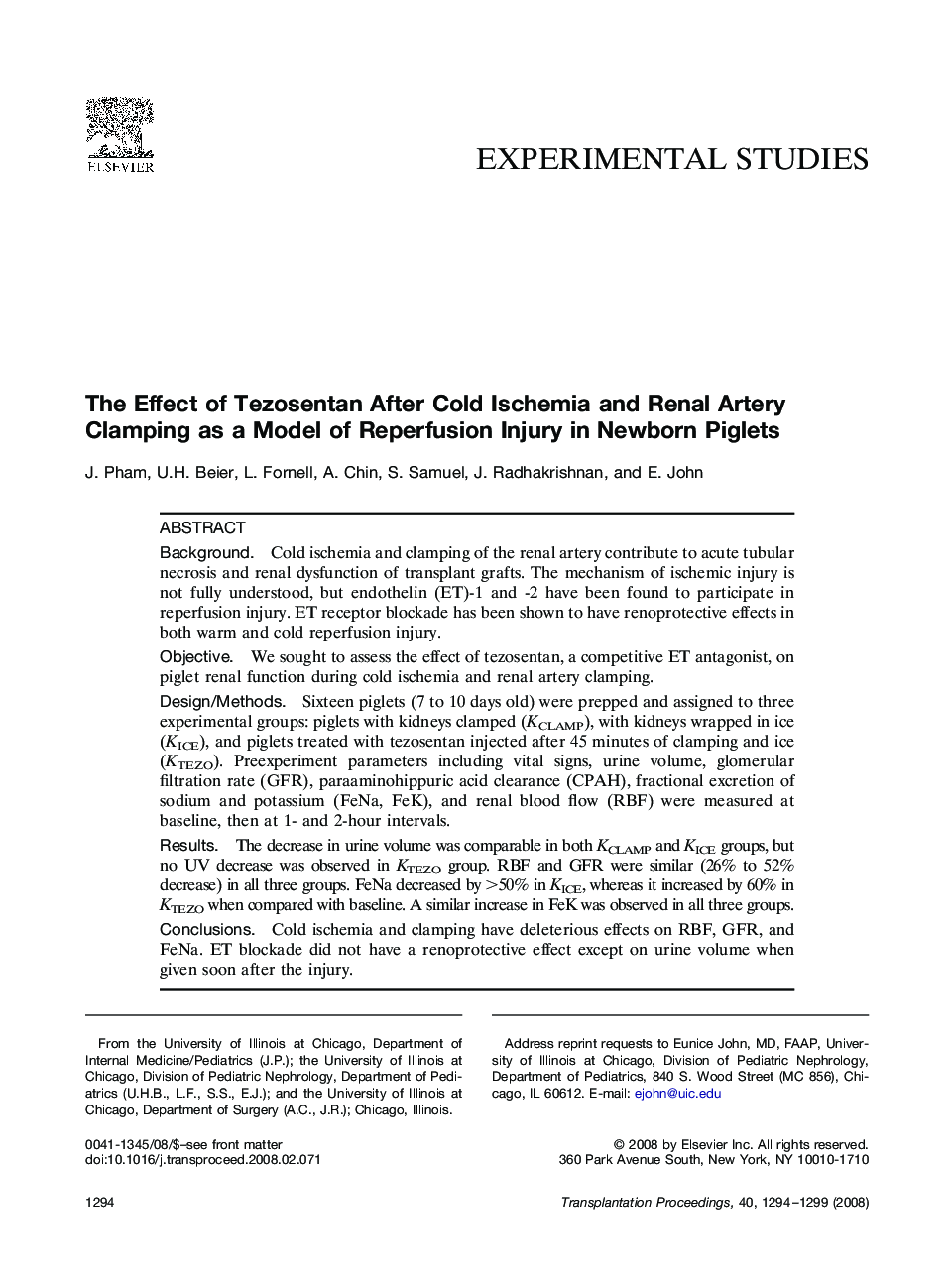| Article ID | Journal | Published Year | Pages | File Type |
|---|---|---|---|---|
| 4258201 | Transplantation Proceedings | 2008 | 6 Pages |
BackgroundCold ischemia and clamping of the renal artery contribute to acute tubular necrosis and renal dysfunction of transplant grafts. The mechanism of ischemic injury is not fully understood, but endothelin (ET)-1 and -2 have been found to participate in reperfusion injury. ET receptor blockade has been shown to have renoprotective effects in both warm and cold reperfusion injury.ObjectiveWe sought to assess the effect of tezosentan, a competitive ET antagonist, on piglet renal function during cold ischemia and renal artery clamping.Design/MethodsSixteen piglets (7 to 10 days old) were prepped and assigned to three experimental groups: piglets with kidneys clamped (KCLAMP), with kidneys wrapped in ice (KICE), and piglets treated with tezosentan injected after 45 minutes of clamping and ice (KTEZO). Preexperiment parameters including vital signs, urine volume, glomerular filtration rate (GFR), paraaminohippuric acid clearance (CPAH), fractional excretion of sodium and potassium (FeNa, FeK), and renal blood flow (RBF) were measured at baseline, then at 1- and 2-hour intervals.ResultsThe decrease in urine volume was comparable in both KCLAMP and KICE groups, but no UV decrease was observed in KTEZO group. RBF and GFR were similar (26% to 52% decrease) in all three groups. FeNa decreased by >50% in KICE, whereas it increased by 60% in KTEZO when compared with baseline. A similar increase in FeK was observed in all three groups.ConclusionsCold ischemia and clamping have deleterious effects on RBF, GFR, and FeNa. ET blockade did not have a renoprotective effect except on urine volume when given soon after the injury.
